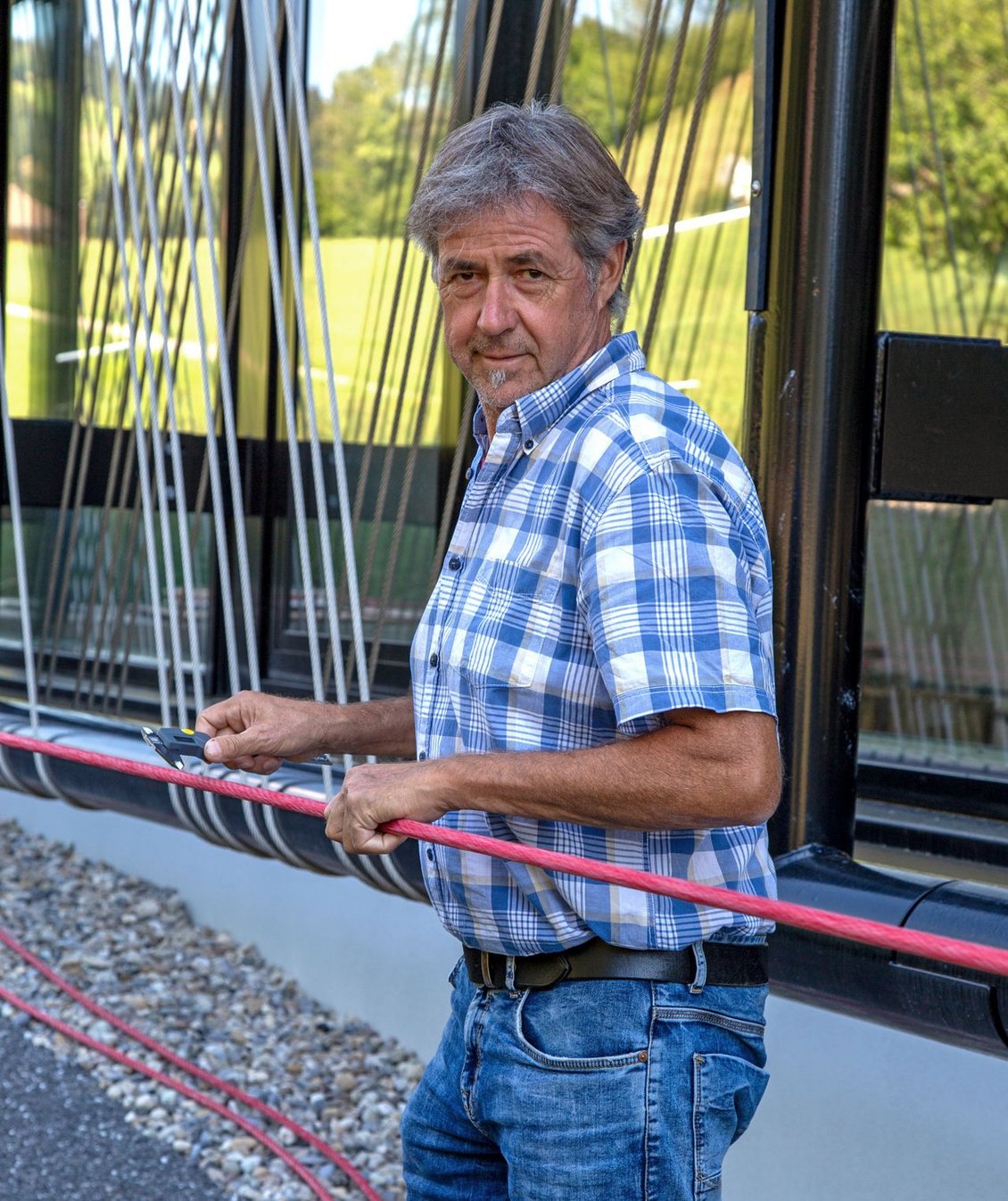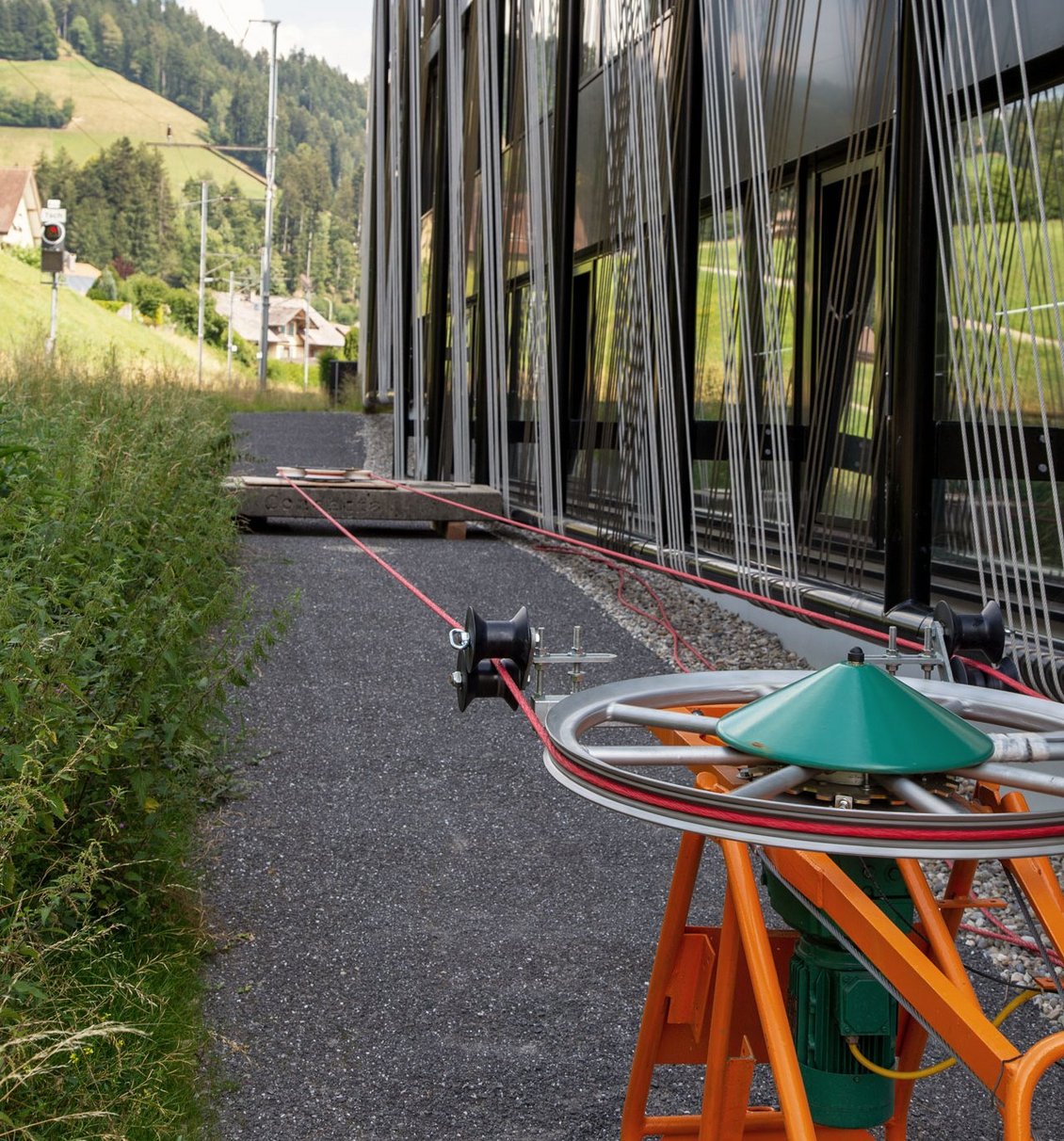A rope that is easy to splice, that has a good grip in the hand
In this interview, rope expert Alfred Beer talks about the development of the new ski lift rope. Jakob Rope Systems has set up a model of a small ski lift in Trubschachen for intensive test runs. Here the new ski lift rope completed many hours of testing.
Alfred, the rope is called “Ski lift rope Hybrid 5”. What's behind it?
In this rope, we mix two fiber types. A load-bearing HMPE fiber in the strand core and a monofilament-multifilament blend as the strand sheath. Hence the name hybrid. The 5 stands for the rope structure of five outer strands. This is unusual for ropes used in conveyor technology. For our ski lift rope, however, this has special advantages. On the one hand, it makes the rope easier to grip, and on the other, it makes it easier to splice the rope into an endless ring on the ski lift.
How did the idea to develop a new ski lift rope come about?
Our staff was tired of working with the existing rope constructions. Often these cannot be spliced. This makes repairs to the rope or rope shortening almost impossible. So the impetus came to develop something new.
What approaches did Jakob take in the development?
We deliberately sought a departure from the previous design of ski lift ropes. We wanted a rope that is easy to splice, that has a good grip in the hand. To achieve this, we looked for solutions to ensure the rope's load-bearing capacity by using other materials. We wanted to reduce elongation and thus maintenance and increase durability.
How do you develop a rope that is particularly low-stretch?
One important difference is that we lay our new ski lift rope with braided strands. This gives us a tighter construction of core and sheathing of the rope, which later stretches less. In contrast, many previous ski lift ropes rely on twisted strands.
100 percent Swiss-made? What advantages does that bring?
We produce the ski lift rope at our Swiss site in Trubschachen. This enables us to achieve short distances between the market, the development and the production of the rope. This enables us to offer our customers a rope product that meets their and our expectations of quality and handling without compromise. This also keeps our supply chain short and largely free of disruptions.
Jakob has set up a test station for the ski lift rope in Trubschachen. Why?
We have set up a model of a small ski lift. Consisting of a drive station, control cabinet, hour counter, speed controller and counter station for deflecting the rope. This allowed us to simulate how the rope behaves on different small ski lifts. An important test aspect was the elongation behavior. The test runs showed how the rope stretches in use and how different splice nodes behave and which one lasts the longest.
What flows from the tests into the finished rope product?
Elongation, wear, abrasion. For all this, we can now provide our customers with rope documentation containing detailed data and information. This makes it easier for ski lift operators to carry out preventive checks on their ski lift rope. This makes it possible to make good use of the rope.

